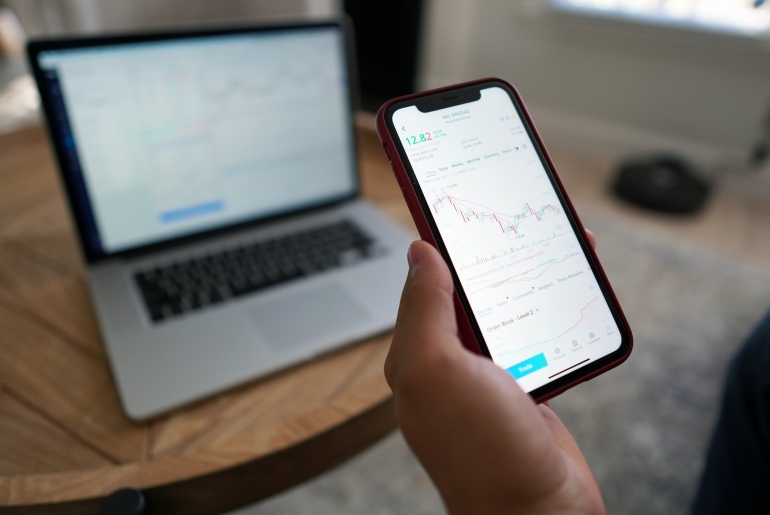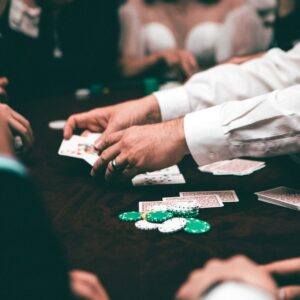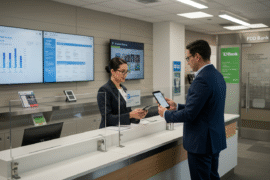This article may contain references to products or services from one or more of our advertisers or partners. We may receive compensation when you click on links to those products or services. Nonetheless, our opinions are our own.
The information presented in this article is accurate to the best of our knowledge at the time of publication. However, information is subject to change, and no guarantees are made about the continued accuracy or completeness of this content after its publication date.
You’re usually committed to following the rules. However, if you recently joined the trading world, violating the pattern day trading rule is easier than you might think, especially when markets are highly volatile. Becoming a routine day trader might negatively affect your ability to engage in the market. Try to avoid getting into this situation as much as possible. This post discusses the pattern day trader rule workaround and sheds light on the dilemma – can you day trade on multiple platforms without breaking the rules? But first, let’s dive into some basics.
What is Day Trading?
Day trading means opening and closing securities within a single day. Opening and closing means buying and selling securities or selling and then buying. Day trading applies to all securities, including options, stocks, EFTs, and bonds.
Day trading has nothing to do with traditional stock investment. It just involves exploiting the up-and-down price movements in the financial markets. Entering and exiting a different position on the same day is not considered a day trade.
What is a Pattern Day Trader?
A person is considered a pattern day trader when they meet the following criteria:
- Engages in four or more day trades in a rolling five business day period
- The trades make up more than six percent of their trading account activity within those five days
For instance, a day trader who engages in three-day trades on Tuesday and three-day trades on Wednesday and has no other account activity would qualify as a pattern day trader.
If you’re a very active day trader, chances are that your account will be flagged as a “PDT” or pattern day trader. When your account is flagged as one, the restrictions kick in.
You must maintain at least $25,000 in your margin trading account equity with the pattern day trader label. This amount has to be held at all times, and you’ll be required to replenish your account when the balance falls below $25,000, even if it means you’re missing a dollar. Also, you cannot exceed three-day trades in five consecutive trading days.
The pattern day trading rule addresses the additional risk posed by trading and ensures that traders have enough equity to meet their margin calls.
If you fail to meet the equity requirement, you’ll face restrictions regarding your ability to close out or sell positions you’ve opened. You could also be limited to trading on a cash basis for three months or until you’ve met the margin call.
It’s worth noting that the day trading pattern rule applies only to margin accounts. This is an account that allows traders to trade using borrowed funds. If you trade with a cash account, the rule does not apply because you’re not borrowing funds in the first place.
How to Avoid the Pattern Day Trader Label
The pattern day trading rule causes some discomfort to many traders. However, there are some actions that you can take to avoid the pattern day trader label, including:
Understand how the calendar works: The simplest way to escape the PDT label is to avoid making more than three-day trades within five consecutive business days. However, remember that the five-day period counts as business days instead of calendar days. If you make three trades on Thursday and another one on Monday, you may be given the PDT status.
Know your broker’s rules: Individual contracts may not be considered day trades if they are part of a large order if you’re trading options. However, it pays to know your brokerage’s rules concerning day trades.
Keep an eye on qualifying trades: If you use an online brokerage, check the user interface for the number of qualifying day trades you’ve made in the past five business days. You want to make sure your total doesn’t exceed four-day trades.
Get some classes: You don’t want to give your broker a reason to believe you are or will be, a pattern day trader. So, enroll in some classes or check your brokerage’s fine print concerning pattern day trading rules.
Bottom Line
Getting labeled as a pattern day trader is no fun. Only some people are forgiving of a new trader with speed and gains on their mind. So, if you want to be a more active trader without getting the PDT status, consider brushing up on the rules concerning margin and avoid overtrading.

Reviewed and edited by Albert Fang.
See a typo or want to suggest an edit/revision to the content? Use the contact us form to provide feedback.
At FangWallet, we value editorial integrity and open collaboration in curating quality content for readers to enjoy. Much appreciated for the assist.
Did you like our article and find it insightful? We encourage sharing the article link with family and friends to benefit as well - better yet, sharing on social media. Thank you for the support! 🍉
Article Title: How to Avoid Getting Marked As A Pattern Day Trader
https://fangwallet.com/2023/06/30/how-to-avoid-getting-marked-as-a-pattern-day-trader/The FangWallet Promise
FangWallet is an editorially independent resource - founded on breaking down challenging financial concepts for anyone to understand since 2014. While we adhere to editorial integrity, note that this post may contain references to products from our partners.
The FangWallet promise is always to have your best interest in mind and be transparent and honest about the financial picture.
Become an Insider

Subscribe to get a free daily budget planner printable to help get your money on track!
Make passive money the right way. No spam.
Editorial Disclaimer: The editorial content on this page is not provided by any of the companies mentioned. The opinions expressed here are the author's alone.
The content of this website is for informational purposes only and does not represent investment advice, or an offer or solicitation to buy or sell any security, investment, or product. Investors are encouraged to do their own due diligence, and, if necessary, consult professional advising before making any investment decisions. Investing involves a high degree of risk, and financial losses may occur including the potential loss of principal.
Source Citation References:
+ Inspo












































